Chapter 10 - Punish. & Sent PDF

| Title | Chapter 10 - Punish. & Sent |
|---|---|
| Course | Introduction to Criminal Justice |
| Institution | The University of Texas at Dallas |
| Pages | 7 |
| File Size | 121.2 KB |
| File Type | |
| Total Downloads | 86 |
| Total Views | 147 |
Summary
Summary to chapter 10 in the textbook...
Description
CRIM 1301 – Intro to CJ (Spr. 2021)
WORKSHEET Chapter 10 – Punishment and Sentencing I.
Define the following terms:
Aggravating factors – circumstances that increase the severity of the crime, such as torture, excessive violence, or premeditation.
Celerity – the notion that potential punishment must occur in a timely fashion.
Certainty – the notion that individuals need to be reasonably aware that if they engage in a criminal act, they will be apprehended and punished.
Determinate sentencing – a sentencing structure in which the offender is sentenced to a specific term.
Electrocution – a form of execution where death occurs from a high dose of electricity that is administered to the body.
Firing squad – a form of execution involving the death of an individual by a gunshot to the heart. Death occurs as a result of rapid blood loss.
General deterrence – suggests that if people fear the punishment that others receive, they will decide not to engage in similar acts in order to avoid that punishment.
Hanging – a method of execution that involves breaking the neck of an offender by suspending him or her with a rope around the neck.
Incapacitation – refers to the practice of removing offenders from society so that they will not engage in criminal behaviors for a certain period of time.
Indeterminate sentencing – a sentencing structure in which the offender is sentenced to a minimum and maximum sentencing range. The actual time served is determined by a parole board, which evaluates release based on rehabilitation and behavior while in prison.
1 W. Sanders – CRIM 1301 Online Course Worksheet (Spr. 2021)
CRIM 1301 – Intro to CJ (Spr. 2021)
WORKSHEET
Just deserts – argues that a punishment for a crime should be proportional or equal to the crime itself.
Lethal gas – a method of execution that uses cyanide gas to suffocate an individual.
Lethal injection – a method of execution that involves the injection of drugs designed to stop the heart and lung functions, resulting in death.
Mandatory sentencing – a type of sentencing structure where the law, not the judge, determines the length of punishment for specific offenses.
Mitigating factors – circumstances that minimize or explain the actions of the offender or the crime.
Parole – early release based on the behavior of the offender. Provides supervision and a system of accountability for offenders for a period of time once they are released from prison.
Rehabilitation – focuses on reforming criminal behavior so that the offender does not need or want to engage in future acts of crime.
Restoration – the only punishment philosophy that places the victim at the core of all decision making.
Retribution – a punishment philosophy that reflects that offenders should be punished for their bad acts purely on the basis that they violated the laws of society.
Severity – the notion that punishment must be harsh enough to deter people from criminal behavior.
Specific deterrence – looks at how an individual may avoid criminal behavior if the potential punishment is viewed as undesirable.
II.
Know the landmark U.S. Supreme court cases and acts: 2 W. Sanders – CRIM 1301 Online Course Worksheet (Spr. 2021)
CRIM 1301 – Intro to CJ (Spr. 2021)
WORKSHEET a. Court Cases i.
Blakely v. Washington (2004) – ruled that because of the Sixth Amendment, the right to a trial by jury, sentencing guidelines cannot override the decision made by the jury in trial.
ii.
United States v. Booker (2005) – the maximum sentence a judge can issue can only be based off of the evidence that can be proved beyond a reasonable doubt.
iii.
Woodson v. North Carolina (1976) – ruled that the death penalty being a mandatory sentence for first-degree murder was unconstitutional (violates the Eighth Amendment) because it does not take aggravating and mitigating factors into account.
iv.
Johnson v. United States (2015) – ruled that the Residual Clause of the Armed Career Criminals Act was unconstitutionally vague and in violation of due process.
v.
Furman v. Georgia (1972) – the administration of the death penalty at the time of the trial constituted cruel and unusual punishment and violated the Eighth Amendment of the Constitution.
vi.
Gregg v. Georgia (1976) – ruled that the death penalty was unconstitutional because there were no rational, objective standards for when it should be given.
vii.
Jurek v. Texas (1976) – ruled that the death penalty was not always cruel and unusual punishment. It needed to be applied fairly without discrimination.
3 W. Sanders – CRIM 1301 Online Course Worksheet (Spr. 2021)
CRIM 1301 – Intro to CJ (Spr. 2021)
WORKSHEET viii.
Proffitt v. Florida (1976) – the death penalty was not cruel and unusual punishment, as long as the judge focuses on the factors contributing to the crime and not solely the crime itself.
b. Acts i.
Fair Sentencing Act (2010) – reduced statutory penalties for crack cocaine offenses. Also eliminated the mandatory minimum sentence for simple possession of crack cocaine and increased statutory fines.
ii.
Sentencing Reform Act (1984) – the U.S. Sentencing Commission was tasked with crafting sentencing guidelines at a federal level to create consistency in sentences. Some have since been criticized for being too rigid and unnecessarily harsh.
iii.
Armed Career Criminals Act (1984) – provides sentence enhancements for felons who commit crimes with firearms if they are convicted of certain crimes three or more times. The Act implies a maximum of a life sentence.
III.
What is needed for deterrence to be effective? a. Certainty - the notion that individuals need to be reasonably aware that if they engage in a criminal act, they will be apprehended and punished. b. Severity - the notion that punishment must be harsh enough to deter people from criminal behavior. c. Celerity - the notion that potential punishment must occur in a timely fashion.
IV.
List the five different correctional philosophies a. Deterrence – offenders will be discouraged from committing crimes if they fear the punishments associated with them. 4 W. Sanders – CRIM 1301 Online Course Worksheet (Spr. 2021)
CRIM 1301 – Intro to CJ (Spr. 2021)
WORKSHEET b. Rehabilitation – focuses on reforming criminal behavior so that the offender does not need or want to engage in future acts of crime. c. Incapacitation – refers to the practice of removing offenders from society so that they will not engage in criminal behaviors for a certain period of time. d. Retribution – a punishment philosophy that reflects that offenders should be punished for their bad acts purely on the basis that they violated the laws of society. e. Restoration – the only punishment philosophy that places the victim at the core of all decision making. V.
Know the pros and cons for the following a. Determinate sentencing i.
Pro – removes bias since there are predetermined sentences for crimes.
ii.
Con – no eligibility for parole, and often harsh sentences, so prisons are being overpopulated.
b. Indeterminate sentencing i.
Pro – allows parole and is more flexible to the situation when a crime is being sentenced.
ii.
Con – allows biases dealing with the sentences.
c. Mandatory sentences i.
Pro – effectively eliminated judicial discretion from the criminal justice system, which takes away biases.
ii.
Con – does not take in other factors when determining a sentence.
d. What are the five ways offenders can be executed under the 8th Amendment
5 W. Sanders – CRIM 1301 Online Course Worksheet (Spr. 2021)
CRIM 1301 – Intro to CJ (Spr. 2021)
WORKSHEET i.
Firing squad – a form of execution involving the death of an individual by a gunshot to the heart. Death occurs as a result of rapid blood loss.
ii.
Hanging – a method of execution that involves breaking the neck of an offender by suspending him or her with a rope around the neck.
iii.
Electrocution – a form of execution where death occurs from a high dose of electricity that is administered to the body.
iv.
Lethal gas – a method of execution that uses cyanide gas to suffocate an individual.
v.
Lethal injection – a method of execution that involves the injection of drugs designed to stop the heart and lung functions, resulting in death.
e. Which of the above-mentioned ways to be executed was created to be more humane? i.
Electrocution – a form of execution where death occurs from a high dose of electricity that is administered to the body.
ii.
Lethal gas – a method of execution that uses cyanide gas to suffocate an individual.
iii.
Lethal injection – a method of execution that involves the injection of drugs designed to stop the heart and lung functions, resulting in death.
f. Be able to answer questions regarding Figure 10.1 i.
Race – most inmates are black, then white, then Latino (sometimes more than white), then other.
ii.
Jurisdiction – black is always highest, but others vary depending on state/federal system.
6 W. Sanders – CRIM 1301 Online Course Worksheet (Spr. 2021)
CRIM 1301 – Intro to CJ (Spr. 2021)
WORKSHEET iii.
State vs. federal system – federal inmate percentages vary from some states.
g. Have a general understanding of Table 10.1 i.
Zones – split up the offense levels into groups.
ii.
Offense levels – the severity of the crime, highest being the most severe.
iii.
Criminal history categories – sentence varies based on past criminal records.
7 W. Sanders – CRIM 1301 Online Course Worksheet (Spr. 2021)...
Similar Free PDFs

Chapter 10 - Punish. & Sent
- 7 Pages

Summary Discipline and Punish
- 1 Pages

BAB 9 KOMBIS SENT
- 15 Pages

Sent casssis dassonville e keck
- 5 Pages

Reinforce vs Punish examples HO
- 1 Pages

Why Do We Punish Offenders
- 4 Pages

Chapter 10 quiz #10
- 3 Pages

Notes 10 - Chapter 10
- 5 Pages

QUES FULL FA1 SENT 123
- 34 Pages
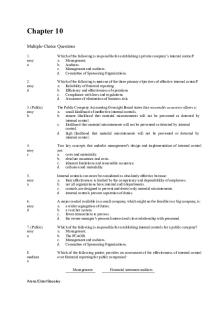
Chapter-10
- 19 Pages
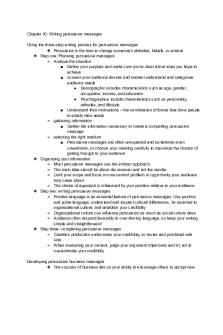
Chapter 10
- 5 Pages
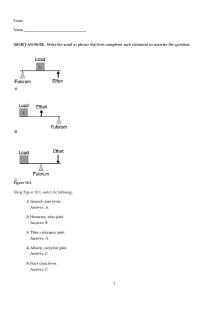
Chapter 10
- 14 Pages

Chapter 10
- 111 Pages
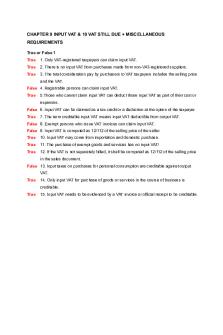
Chapter 10
- 16 Pages
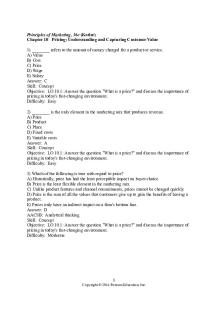
Chapter 10
- 47 Pages
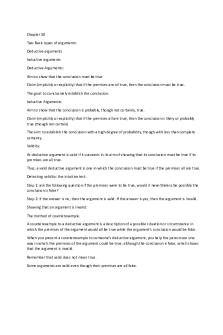
Chapter 10
- 4 Pages
Popular Institutions
- Tinajero National High School - Annex
- Politeknik Caltex Riau
- Yokohama City University
- SGT University
- University of Al-Qadisiyah
- Divine Word College of Vigan
- Techniek College Rotterdam
- Universidade de Santiago
- Universiti Teknologi MARA Cawangan Johor Kampus Pasir Gudang
- Poltekkes Kemenkes Yogyakarta
- Baguio City National High School
- Colegio san marcos
- preparatoria uno
- Centro de Bachillerato Tecnológico Industrial y de Servicios No. 107
- Dalian Maritime University
- Quang Trung Secondary School
- Colegio Tecnológico en Informática
- Corporación Regional de Educación Superior
- Grupo CEDVA
- Dar Al Uloom University
- Centro de Estudios Preuniversitarios de la Universidad Nacional de Ingeniería
- 上智大学
- Aakash International School, Nuna Majara
- San Felipe Neri Catholic School
- Kang Chiao International School - New Taipei City
- Misamis Occidental National High School
- Institución Educativa Escuela Normal Juan Ladrilleros
- Kolehiyo ng Pantukan
- Batanes State College
- Instituto Continental
- Sekolah Menengah Kejuruan Kesehatan Kaltara (Tarakan)
- Colegio de La Inmaculada Concepcion - Cebu